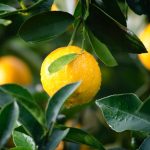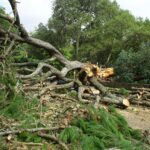At a glance
- Pruning enhances tree health, airflow, and pest management.
- Stimulates new growth and fruiting spurs and improves harvest quality.
- Awakening phase for pruning deciduous trees.
Pruning fruit trees is an essential practice for maintaining their health, promoting optimal growth, and maximising fruit production. However, one crucial aspect that often gets overlooked is the timing of pruning. Knowing the right time to prune your fruit trees in Melbourne can make a significant difference in their overall well-being and productivity. Hence, we will explore the significance of timing in fruit tree pruning in Melbourne’s unique climatic conditions.
Importance of Pruning Fruit Trees
Proper pruning plays a vital role in the overall health and longevity of fruit trees. By selectively removing certain branches, you can enhance airflow, increase sunlight penetration, and shape the tree’s structure. This practice also helps manage pests and diseases by removing infected or weak branches, reducing the risk of further damage.
Additionally, pruning stimulates new growth, encourages fruiting spurs, and improves the quality of the harvest. It allows the tree to distribute its energy effectively, focusing on producing robust branches, healthy foliage, and abundant fruit. However, to reap these benefits, it is crucial to prune at the right time, aligning with the natural cycles of the trees.
Understanding the Seasonal Cycles
Fruit trees undergo distinct phases throughout the year, and understanding these cycles is key to determining the best time for pruning. Here we discuss pruning fruit trees in the Melbourne area across different seasons.
Spring: The Awakening Phase
As the winter frost fades away, fruit trees in Melbourne enter the awakening phase during spring. This is an ideal time for pruning deciduous fruit trees as they begin to emerge from dormancy. The absence of leaves allows for a clear view of the tree’s structure, making it easier to identify and remove any dead, damaged, or crossing branches. Pruning during this period promotes new growth and redirects the tree’s energy towards developing strong branches and an abundant fruit set.
Growth Patterns and Energy Allocation
During spring and early summer, fruit trees focus on vegetative growth, where energy is primarily directed towards developing leaves, branches, and roots. Pruning at this stage encourages the tree to invest its resources in establishing a robust framework, which ultimately contributes to its long-term health and stability.
Identifying Key Indicators for Pruning
While timing is crucial, it is equally important to pay attention to specific indicators before pruning. Look for signs such as dead or diseased branches, excessive crossing or rubbing branches. By addressing these issues during the spring pruning, you can prevent further problems and promote better tree structure.
Summer: The Flourishing Phase
Summer is a period of vigorous growth for fruit trees, with foliage in full bloom and fruit maturing. While extensive pruning during this phase is not recommended, it is an opportune time to assess the tree’s health and vigour. Inspect the branches for signs of stress, such as disease or pest infestations, and address them promptly. Additionally, thinning out excessive fruit clusters can promote better fruit size and quality and prevent branches from becoming overly burdened.
Managing Fruit Production and Sun Exposure
Pruning in summer also involves strategic thinning to ensure adequate sun exposure for the developing fruit. By selectively removing overcrowded branches, you allow sunlight to reach the fruiting wood, enhancing its colour, sweetness, and overall flavour. Proper sun exposure also aids in the development of strong buds for next year’s harvest.
Autumn: The Transition Phase
Autumn brings about the transition from the growing season to dormancy. This period is ideal for preparing fruit trees for the challenges of winter and promoting their overall resilience.
Preparing Trees for Dormancy
Late autumn, after the fruit has been harvested, is a suitable time for pruning certain fruit trees in Melbourne. By removing dead, damaged, or diseased branches during this period, you can prevent potential sources of infection and disease from spreading further. Additionally, light pruning to reshape the tree’s canopy can help alleviate wind resistance and minimise the risk of damage during winter storms.
Addressing Disease Prevention and Tree Structure
Autumn pruning also allows for a closer inspection of the tree’s overall health. Take note of any signs of fungal infections or pest infestations, and promptly remove affected branches to mitigate the risk of further damage. Additionally, addressing structural issues, such as crossing or weak branches, can prevent potential hazards and promote a stronger framework for the tree.
Factors Influencing Pruning Timing in Melbourne
Several factors influence the optimal timing for pruning fruit trees in Melbourne. It is essential to consider these factors to ensure the best outcomes for your trees.
Climate and Weather Conditions
Melbourne’s climate is characterised by cool winters and warm summers. Understanding the local climate patterns, including the frost period and extreme temperature fluctuations, can help determine when it is safe to prune without risking frost damage or stressing the tree during heat waves.
Specific Fruit Tree Varieties and Their Growth Habits
Different fruit tree varieties have distinct growth patterns and requirements. Some trees, such as stone fruits (e.g., peaches, plums), benefit from pruning during the dormant season, while others, like citrus trees, are more tolerant of pruning throughout the year. Research the specific needs of your fruit tree varieties to tailor your pruning schedule accordingly.
Soil Conditions and Nutrient Availability
Soil health plays a crucial role in the overall vitality of fruit trees. Conduct soil tests to assess nutrient levels and pH balance, as deficiencies or imbalances can impact the tree’s growth and vigour. Pruning can be timed to coincide with soil amendments or fertilisation to maximise the tree’s response and nutrient uptake.
Pest and Disease Considerations
Pests and diseases can greatly affect the health and productivity of fruit trees. Timing your pruning to address pest or disease issues, such as removing infected wood or managing insect populations, can help prevent their spread and maintain tree health. Consult with local experts or arborists to identify potential pest and disease risks in your area.
Fine-tuning the Pruning Schedule
To optimise the benefits of pruning, it is crucial to fine-tune your approach based on specific considerations.
Pruning Objectives and Goals
Clearly define your pruning objectives and goals. Are you aiming to improve tree structure, increase fruit production, or manage pests and diseases? By aligning your pruning practices with these objectives, you can make more informed decisions regarding the timing and extent of pruning.
Balancing Tree Health and Productivity
While pruning is essential for promoting tree health, it is vital to strike a balance between tree vigour and fruit production. Excessive pruning can weaken the tree and reduce its ability to bear fruit. Consider the age and condition of the tree, as well as its previous pruning history, to determine the appropriate level of pruning required.
Considering Tree Age and Previous Pruning History
The age of the tree and its previous pruning history can influence the timing and intensity of pruning. Younger trees generally require lighter pruning to encourage healthy growth and establish a strong framework. Older, well-established trees may benefit from more substantial pruning to rejuvenate the canopy and maintain productivity.
Recommended Pruning Practices in Melbourne
Implementing proper pruning techniques is vital for the well-being of your fruit trees. Here are some recommended practices for pruning in Melbourne:
Techniques for Selective Branch Removal
When pruning, utilise proper pruning techniques such as thinning cuts without removing the branch collar, heading cuts, and selective branch removal. Thinning cuts involve removing entire branches or stems at their point of origin while heading cuts involve removing terminal buds. These techniques promote balanced growth and minimise the risk of stubs or excessive regrowth.
Proper Tools and Equipment for Effective Pruning
Invest in quality pruning tools suitable for the size and type of branches you will be working on. Clean and sharpen your tools regularly to ensure clean cuts and minimise the risk of disease transmission. Pruning shears, loppers, pruning saws, and pole pruners are commonly used tools for fruit tree pruning.
Pruning Guidelines for Different Fruit Tree Types
Different fruit tree types have specific pruning requirements. Stone fruits, such as peaches and plums, benefit from open-centre or vase pruning to enhance sunlight penetration. Citrus trees generally require minimal pruning, focusing on removing dead or diseased wood. Apples and pears often respond well to central leader pruning to maintain a dominant central trunk. Research the specific pruning guidelines for your fruit tree varieties to ensure optimal results.
Observations and Best Practices from Local Experts
Gaining insights from experienced arborists and horticulturists can provide valuable knowledge and guidance for pruning fruit trees in Melbourne. Consult with Same Day Tree Works, we are familiar with the unique challenges and considerations of the region. We offer advice on specific varieties, share observations from our own experiences, and provide tailored recommendations based on local conditions.
Tips and Advice for Novice Gardeners in Melbourne
For novice gardeners in Melbourne, starting with basic pruning practices and gradually expanding your knowledge can help build confidence in caring for fruit trees. Attend local workshops, join gardening clubs, or seek guidance from local nurseries to learn from experienced gardeners and gain practical insights into fruit tree pruning in Melbourne.
Conclusion
Timing is crucial when it comes to pruning fruit trees in Melbourne. By understanding the seasonal cycles, considering local factors, and fine-tuning your pruning schedule, you can promote the health, vigour, and productivity of your fruit trees. Remember, when in doubt, it is always advisable to consult with expert arborists or horticulturists like Same Day Tree Works, who can provide personalised advice based on your specific tree species and local conditions. Discovering the ideal time for pruning fruit trees in Melbourne is a rewarding journey that leads to fruitful harvests and thriving trees.





